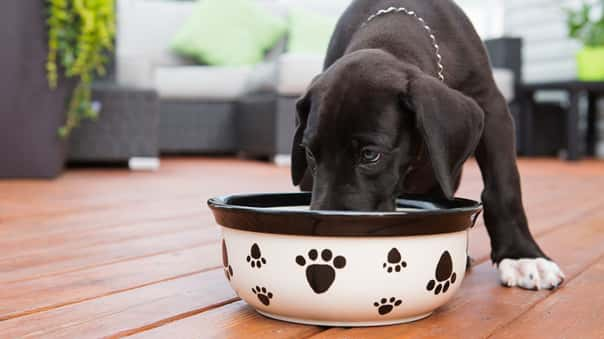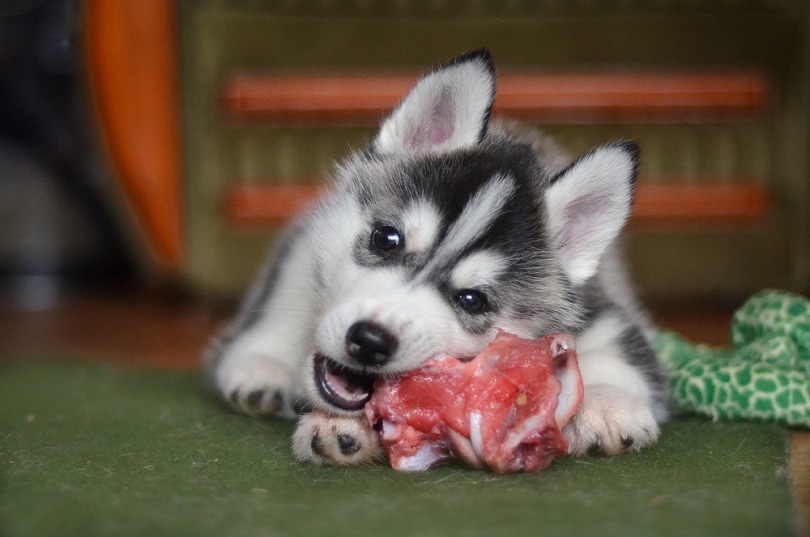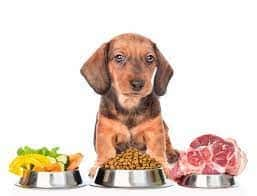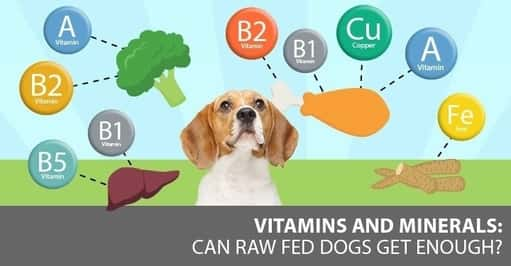Dog Nutritional Care: Essential Nutrients Your Dog Requires
Diet plan is the foundation of good health and improve healthier condition with Dog Nutritional Care, whether it’s for human beings, hamsters, or canines. Frequently, dietary demands reflect what the animal can’t synthesize itself however can get from food. These usually differ by varieties, with a little overlap.
As an example, both people and guinea pigs must get vitamin C from what they eat. Various other pets can generate it within their bodies. Various other types, such as pet cats, are obligate carnivores, which implies that they have to eat meat.
Surprisingly, canines and also individuals share regarding 84% of DNA. That suggests that a canine diet will certainly mirror numerous things in a human diet. Nonetheless, that does not indicate both can consume just the same points.

We can consume chocolate while canines– and many other animals– can not. It’s valuable to begin at the standard level of discovering what types of food that your puppy ought to consume.

Carnivore or Omnivore Diet for Dog Nutritional Care
Whether dogs are carnivores or omnivores is a topic of extreme argument. For a long time, scientists thought that they descended from wolves.
That’s fifty percent real. Wolves are a forefather of pets, but a shared one. Both species diverged from an extinct animal, taking different evolutionary paths.
The debates for an omnivore consist of the length of a pet dog’s intestine. Animals that eat vegetation commonly have a longer GI system, because these foods take longer to digest.
The possibilities are that you’ve seen your dog eat yard occasionally. Coping with humans has additionally undoubtedly affected their diet.
On the other side, the evidence for the pet dog being a carnivore begins with their carnassial teeth. These allow carnivores to tear the flesh of target.
Dogs also have forward-facing eyes so they can pinpoint their victim. They can also go with lengthy stretches without food because meat will keep them satiated longer. Generally, canines appear to be carnivores that have actually adapted to coping with people.

General Feeding Guidelines for Dogs
Possibly the most common inquiry pet dog proprietors ask their vet is “What should I feed my dog?” Feeding your dog an appropriate amount of a healthy diet regimen is vital to its overall health as well as wellness.
To recognize just how and what to feed your dog, you need to comprehend what the nutritional demands of dogs are as well as exactly how these needs have actually developed through the process of biological evolution.
Given that pets are carnivores, doesn’t this mean that they need to consume a diet regimen that is meat based?
As a species, the pet dog is a member of the scientific order Carnivora, a big team of animal pets that share a comparable tooth framework. The nutritional demands of animals belonging to this order vary.
Dog Nutrition and Care
Some participants of this group have an absolute requirement for meat in their diet plan (called obligate or real carnivores), while others can satisfy their nutrient demands with eating plant material (herbivores) or a mix of meat as well as plants (omnivores).
Felines are an example of an obligate predator, cows are an instance of an herbivore, as well as pet dogs and humans are 2 examples of omnivores.

As a result of the nutritional needs of pets, both their tooth framework and also intestinal system have actually come to be adjusted to an omnivorous diet plan. This implies that, under regular conditions, canines can satisfy their dietary needs by consuming a combination of plant as well as animal foods.
The resource of the healthy proteins and also fats is less important than the high quality and also digestibility of these vital components of the pet dog’s diet regimen for improve Dog Nutrition and Care.
Dogs can grow if they are fed an effectively well balanced vegetarian diet regimen. Nonetheless, an all-meat diet plan would certainly be out of balance and also would not fulfill all of a dog’s nutritional requirements.
” Under regular scenarios, canines can meet their dietary demands by consuming a combination of plant and also animal foods.”
As study into fundamental and applied nourishment has actually broadened the knowledge of canine nutrition, it is currently known that a well-balanced diet plan needs to additionally include an ideal quantity of minerals, vitamins, particular necessary amino acids (from healthy proteins), as well as certain vital fats (from fats).
These elements are needed to develop and preserve tissue and carry out biological reactions, as well as the needed amounts differ somewhat with the dog’s stage of life (puppy, teenage, adult, pregnancy, elderly).

Macronutrients for Dog Nutritional Care
Macronutrients are large, complicated particles that create the basis of an organism’s diet. These are things that you’ll see on pet food tags to aid you compare products.
Various pets have varying needs. You can utilize the nutrient profiles of the Association of American Feed Control Officials (AAFCO) as a guide to what your pup requires.
Protein for Dog Nutritional Care
Healthy proteins are complicated particles composed of amino acids. There are 21, of which nine are important for humans and also 10 for canines. Unlike other macronutrients, healthy protein is not kept in the body. That implies a microorganism must eat it every day.
Despite the fact that the called for amounts of amino acids appear small, long-lasting deficiencies can have profound impacts on a dog’s health and long life.
Healthy proteins supply the building blocks for other chemicals in the body, whether it’s your or your family pet’s. They form the basis for a wide series of materials, from connective tissue to muscle mass and also nails.
Another point to think about is your pet’s life phase. Pups will need much more healthy protein to support growth as well as growth than an adult pet.
Young pets require 9.7 g-12.5 g of protein per kg of body weight each day. It’s 2.62 g for a grownup. That appears to 22% and 18%, respectively. The difference is that a young puppy requires more healthy protein to grow.

Fat for Dog Nutritional Care
Fat provides a crucial resource of energy at 9 calories per gram. Canines– and also humans– will store excess quantities to make sure that all set supply is constantly available. Obviously, there are pros and cons to that.
Nevertheless, fat is the raw material for many body frameworks and also cholesterol, which is crucial for mind advancement and also function. It additionally permits pooches to save fat-soluble vitamins.
Once again, the quantity differs with the life stage. A pup requires 5.9 g of fat per kg of body weight to provide the needed power for growth. An adult requires 1.3 g. The percents are 8% as well as 5%, respectively.
Dogs must additionally get adequate amounts of omega-3 fats in their diet regimen. Flaxseed is an exceptional source of these nutrients, which is why you often will see them in ingredient lists.
Carbohydrates for Dog Nutritional Care
Carbs offer energy in a type that is much more conveniently digested than fat. The result is lower, at 4 calories per gram.
Carbs serve for brief bursts of power, such as your pet dog chasing after a round or the household cat. Unlike the other macronutrients, there aren’t particular guidelines for carbohydrates or fiber. However, they are a vital part of your pup’s diet.

Vitamins for Dog Nutritional Care
There are 2 primary courses of vitamins: water-soluble and also fat-soluble. The previous is, as the name indicates, dissolvable in fluids. Pets, consisting of humans, can not save them in their bodies. Consequently, they need to obtain them every day.
Nevertheless, they will eliminate what they can not use, making excess amounts a waste. The exemption is vitamin B12, which animals receive from meat. Dogs can save it in their bodies. Canines and felines don’t need vitamin C given that they can manufacture it.
Fat-soluble vitamins consist of A, D, as well as E. Pets don’t need nutritional vitamin K because they can generate it inside.
Animals can keep these nutrients in their fat tissue. That means that excess quantities can be problematic due to the fact that they can get to hazardous levels. That’s especially real with vitamin A. It’s an additional factor that megadoses aren’t sensible alternatives when picking a family pet food.
Interestingly, the marginal vitamin needs are comparable for both young puppies and also grown-up dogs.
To guarantee that your pup is getting adequate amounts, look for the term, “full as well as well balanced,” on the label. That indicates the food has every little thing that your animal requires in sufficient quantities.
There are three classifications of minerals based upon the quantity needed as well as their dietary value. Macrominerals include nutrients, such as magnesium and also calcium.
Animals– as well as people– need fairly large amounts in their diet regimen. Crucial trace element, such as iodine as well as iron, have much smaller minimum values.

You may see other nutrients on the tag that don’t suit either of these two teams, such as molybdenum. Nonetheless, they are still present in industrial canine foods.
The various other noteworthy aspect with minerals is the proportion in between calcium and phosphorus. The reason is due to absorption rates.
If your pet gets way too much phosphorus, it can disrupt their body’s ability to take in calcium and also the other way around. The excellent proportion for calcium as well as phosphorus is 1:1 for young puppies as well as 1:1– 2:1 for grownups.
Equilibrium is additionally essential. Excess amounts of minerals can cause severe health and wellness concerns, particularly in young puppies.
That’s why industrial diet regimens are better over homemade ones or table scraps. You can rest assured that your animal is obtaining the right quantities of every little thing that they need.
The pet food industry markets towards proprietors that desire the most effective for their pets. Commonly, that means marketing that a food is of equal high quality as people food.
Things that we take pleasure in as well as need are not necessarily beneficial for family pets, and also it’s worth keeping in mind that the AAFCO doesn’t define human-grade food.
The USDA does, but a pet dog food maker would need to abide by USDA laws to create foods that meet those standards. It’s necessary to understand that corresponding human-grade items with safety and security isn’t a given.

For pet dog food, you’ll find active ingredients detailed on the label in the order of the sections that it contains.
Products such as blueberries, cranberries, as well as pleasant potatoes offer little dietary worth for your canine, specifically in the minute amounts that these foods have. They offer much more as advertising devices than beneficial supplements to your pup’s diet plan.
A Word About Calories
Obesity is a severe issue for dogs as well as people. It can place your puppy at a higher threat of chronic wellness problems, such as diabetic issues and also cardiovascular disease.
We recommend checking your pet dog’s body condition and also adjusting their diet to keep them from coming to be overweight.
Remember that deals with should account for no greater than 10% of your pup’s day-to-day calorie consumption. They won’t have the same dietary value as an industrial diet regimen.
They are a reliable training help that you can better leverage in your favor if you restrict just how much your family pet gets.
The suggested day-to-day caloric intake for your canine differs with their excellent weight, not unlike people. For instance, a 10-pound canine needs between 200-275 calories each day, whereas it’s 700-900 calories for a 50-pound dog. Compare that to people, that need 2,000-2,500 calories.
The most effective method to manage family pet weight problems is avoidance. It’s infinitely easier to manage your pet dog’s consumption than to get them to drop weight.
Checking their diet regimen will generate quicker outcomes than raised task. Nonetheless, a combination of the two is even much better.

I was told that dogs cannot digest carbohydrates. Is this true?
To fulfill their power requires, pet dogs have actually evolved to utilize proteins and also fats as their main power resources, but they can additionally utilize carbs for energy.
The reality that the pet dog’s gastrointestinal system produces enzymes that are specific for absorbing starches and sugars shows that they can digesting carbs. Nevertheless, complex carbohydrates such as grains are much more absorbable when they are cooked.
I have heard that dogs should only eat raw foods and that dogs cannot properly digest cooked foods. Is this true?
Tamed pet dogs have actually adapted over millennia to take in diet plans provided by their human friends, including foods that have actually been cooked.
As pointed out over, dogs can really absorb intricate carbohydrates extra conveniently as soon as they have been cooked. Feeding raw diets can bring a variety of risks to the canine in addition to individuals in the house, specifically those that are young or immunocompromised.
What are the nutritional requirements for dogs?
The six standard nutrients are water, proteins, fats, carbs, minerals, and also vitamins. These necessary nutrients are required as part of the pet dog’s routine diet regimen and also are associated with every one of the standard features of the body.
The minimal dietary need has actually been developed for many nutrients. The maximum tolerable quantities of some nutrients are known, and outcomes of toxicity have actually been established. What is much less recognized is what may take place in time with low deficiencies or extras.
Nutritional standards have actually been developed by the Organization of American Feed Control Officials (AAFCO). AAFCO guidelines are the basic basis for the nutritional web content of business pet foods.
Ensure that your canine’s food meets the AAFCO standards. Keep in mind that these are guidelines and also your pet dog may need essentially depending upon his health standing. Talk with your vet for more information on specific nutrients that your specific pet dog may require.
What should I look for in a dog food?
The most effective suggestions you can receive regarding feeding your pet is this: feed your dog the first-rate food you can manage.
The distinctions between a premium food and budget food are not located on the nourishment label; they are discovered in the high quality and also resource of active ingredients. Two pet dog foods might each consist of 27% protein yet be greatly different when it comes to digestibility.
Animal food active ingredients are listed by order of weight. Each ingredient is weighed when it is added to the batch of food, and active ingredients such as fresh meat contain a lot of water, much of which is shed throughout processing.
This suggests that a completely dry diet plan that provides corn as the very first ingredient may be nutritionally above one listing meat first.
“Feed your dog the highest-quality food you can afford.”
To further make complex matters, some nutrients are provided as a “minimum” percentage, while others are detailed as a “optimum” percent, indicating that the set of food may contain a higher or reduced portion of the active ingredient than shown on the label.
The very best technique to choose a food for your canine is to ask your vet. Nevertheless, right here are some basic ideas to help you decide what must enter into your dog’s food bowl:
- Select diet plans with real, identifiable, whole-food active ingredients. If the majority of noted active ingredients is unknown to you, locate one more diet plan.
- Select a low-calorie diet. Many grown-up, interior, purified or neutered pet dogs have reduced power needs. Your canine’s diet plan should contain a reasonably small number of calories per cup; ideally less than 350 calories.
- If your canine food contains 500 calories per mug and also you have a 20-pound pet, the quantity you need to feed is tiny (as well as unsatisfying!). Making issues worse, high-calorie foods indicate also a couple of added kibbles can actually pack on the extra pounds.
How much should I feed?
The suitable technique for figuring out the number of calories to feed your canine is to identify what your canine’s lean weight need to be and also feed according to that weight. Sadly, this calls for consistent monitoring (and evaluating) and also is not always sensible.
“Your veterinarian can estimate how many calories your dog needs each day based on his lifestyle and body condition score.”
Your vet can approximate how many calories your dog needs daily based upon his lifestyle as well as body condition score. The conventional formula made use of for determining the power needs of the ordinary grown-up pet dog that lives inside your home, receives light day-to-day exercise, and is purified or sterilized is:
30 x weight in kg (or pounds divided by 2.2) + 70 = daily caloric needs
Be aware that few of our pet dogs are “ordinary,” so this formula is just a starting point. A lot of canines will certainly need fewer calories on a daily basis, while a few will need a little more.
This day-to-day caloric overall consists of not just your pet dog’s meals, but likewise any treats and deals with. If your dog requires to lose weight, your veterinarian will advise calorie restriction (which is generally 70% to 90% of the calculated amount for weight upkeep).
How often should I feed my dog?
The biological evolution of dogs as seekers has given them specialized gastrointestinal as well as intestinal adjustments that enable them to ingest a big meal adhered to by up to days of not eating.
However, for most pet canines, feeding one or two times per day is recommended. Numerous pets will certainly take advantage of eating similarly split meals two to three times per day.
See the handout “Feeding Times and also Frequency for Your Pet” to find out more on feeding timetables and also mealtimes.
No matter the feeding timetable you select, avoid enabling your pet dog to exercise strongly after eating a large meal, particularly if your dog eats its food quickly.
This will certainly help minimize problems with bloat, intestinal obstruction, or other serious digestive disorders. Be sure your pet has accessibility to fresh, clean water in any way times.
Is dry or canned food better?
In terms of nutrition as well as digestibility, there are simply no differences in between dry as well as canned (damp) dog food. You should make your choice based upon your way of life, preferences, and spending plan.
For dogs that require to eat even more water or have certain special nutritional demands, tinned foods might be a much better choice. Or else, many dogs will do fine on dry kibble.
Some completely dry kibble rations have actually been specifically formulated as oral diet regimens and can help to mechanically remove plaque. For further information, see the handout “Dental and Oral Disease in Dogs”.
Are there any breed differences in nutritional requirements?
In the past numerous years, nutritional experts as well as vet researchers have actually identified that there are definite breed variations in metabolism and also nutrient requirements.
Breeds of canines that were established in particular places, such as Polar circle breeds and also several of the water breeds, might have adjusted to specialized diets that are common in their place of origin.
Inbreeding as well as hereditary differences between individuals in each varieties may cause further need for individualization of the pet’s diet plan in order to enhance health and wellness.
Along with considering your dog’s type, you ought to likewise consider your pet’s lifestyle. Functioning pets (hunting dogs, area test canines, rounding up pets) require different ratios of healthy proteins and fats in their diet plans than small dog or less active residence canines.
What is meant by life-stage nutrition?
Pet dogs have varying nutritional needs throughout various phases of their lives, and also feeding a diet that is developed for all life stages is not always proper.
A versatile canine food might not offer sufficient nutrients to satisfy the needs of a growing puppy or an expecting or nursing mommy. Conversely, this very same all-purpose diet plan might give excessive nutrients to an elderly or non-active pet.
Feeding your pet according to its stage of life (puppy, teenage, pregnancy, adult, senior) is now suggested by reputable nutritional experts to maintain your pet’s general wellness as well as well-being and also improve both the high quality as well as the quantity of your pet’s life. This information can be discovered on the tag of your pet dog’s food as the AAFCO Declaration.
Life-stage feeding for puppies. Early in life, young puppies have to eat commonly as well as great deals! They require reasonably larger quantities of food due to the fact that they are growing rapidly as well as have limited area in their tiny stomachs..
At 6 to 8 weeks of age, they need to be fed about 4 to 6 meals a day. By 6 months, the requirement for food is reduced because puppies are about 75% of their grown-up dimension as well as can be fed 2 to 3 meals a day.
A good-quality young puppy food has advantages over adult canine food since it has actually been specially formulated for a young puppy’s demanding dietary needs as well as consists of the appropriate quantity of calcium.
Because of their fast development, any type of nutritional mistakes made during puppyhood will certainly have extra severe, even permanent as well as long-lasting, effects. Due to the fact that growth is almost full by 8 to 10 months old, the average puppy can be switched over to adult pet food at regarding year old.
If you have a big- or giant-breed young puppy, one that is mosting likely to evaluate more than 50 pounds (23 kg) as a grown-up, or is at-risk for hip dysplasia, elbow dysplasia, or various other development abnormalities (for instance, Labrador as well as Golden Retrievers, German Shepherds), you should feed a young puppy food specifically developed for large-breed young puppies.
These diets are created to contain the optimum proportion of healthy proteins and calcium to moderate quick bone development that can bring about joint problems. Your veterinarian might also advise a transitional adolescent diet plan for your pet dog’s ‘teen’ years.
After discouraging, the majority of young puppies lose the capacity to absorb milk sugar (lactose). For that reason, while percentages might be tolerated, feeding milk can cause digestive distressed and diarrhea since dogs can not absorb it appropriately.
Life-stage feeding for the older canine. Older canines, especially those over 7 years old, will certainly benefit from a diet plan formulated for their demands. Senior pet diet plans typically have reduced calories, higher protein, lower salt, and fewer carbohydrates.
Lots of additionally include components such as prebiotics or probiotics to preserve healthy intestinal microbial populaces, enhanced omega-3 fatty acids as well as other anti-oxidants to combat swelling, as well as glucosamine to advertise joint health.
Make sure to ask your vet regarding the very best food for your elderly pet dog. Some senior diets will include medium chain triglycerides to help slow down modifications to the mind that can bring about senility problems.
What is my take-home message?
Selecting a high-quality food from the hundreds of readily available brand names and also formulas can be tough. The pet nutrition sector is really affordable, and most commercially available foods are great balanced diets.
Ask your veterinary health care group to aid you choose a diet that is backed by clinical concepts as well as research which satisfies your pet’s individual needs. If you have any type of questions about a particular food, your ideal resource for help is your vet health care group.
Final Thoughts About Dog Nutritional Care
Feeding your canine a high-grade diet that gives nutrients in the quantities that they need is the solitary best thing that you can do as a pet dog proprietor.
A great diet will provide an exceptional structure for development as well as development while providing your puppy the nutrition that they require to remain healthy and prevent disease. The crucial takeaway is that the demands of canines are both comparable as well as various from those of individuals.
We recommend that you just feed foods developed for your dog’s type size and life stage. Feeding them individuals foods is a domino effect of poor nourishment, deficiencies, and also possible allergic reactions.
source https://www.petcarestores.com/dog-nutritional-care-essential/